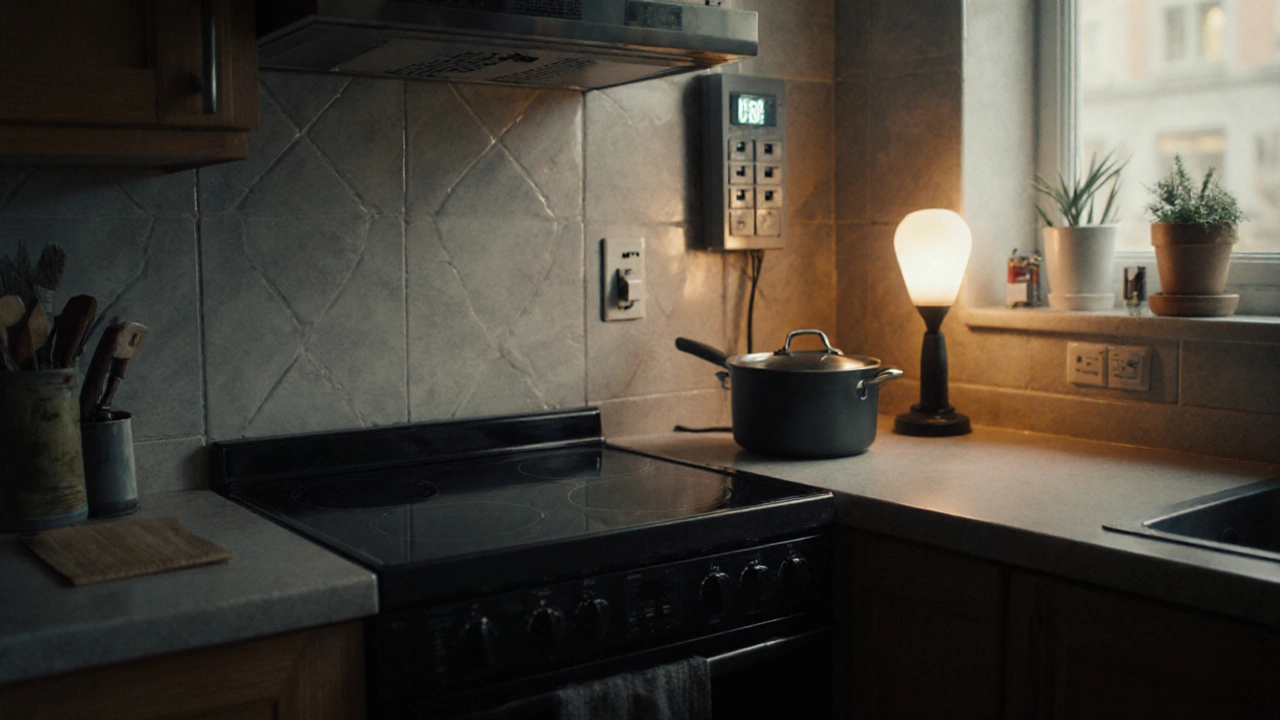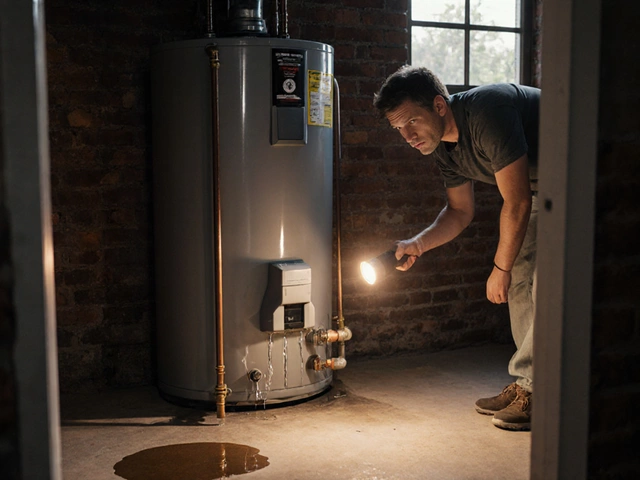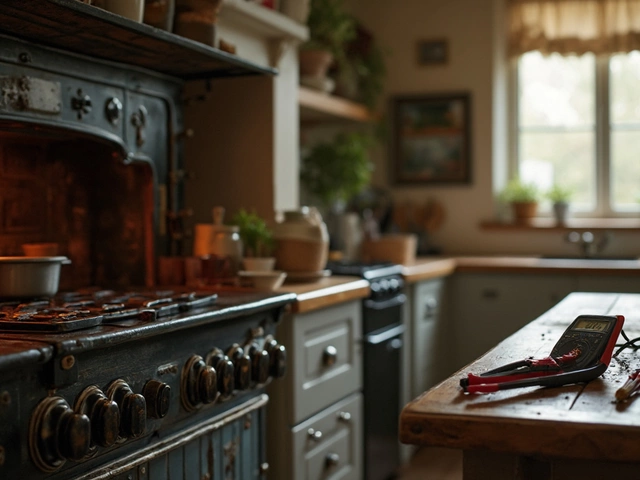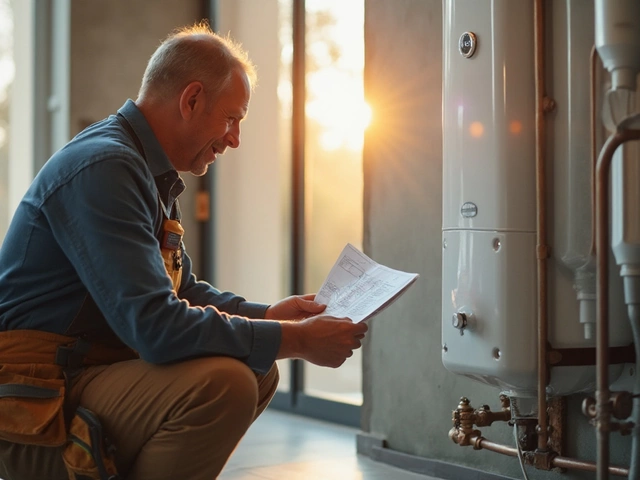Cooker Troubleshooter
What's happening with your cooker?
Select the symptoms you're experiencing:
If your cooker suddenly stopped working, you’re not alone. It happens to thousands of households every week - no warning, no warning light, just silence when you turn the knob. One minute you’re preheating for dinner, the next you’re standing there staring at a cold oven and wondering what went wrong. The good news? Most of the time, it’s not a full replacement job. A simple fix, a reset, or a cheap part swap can get you back in business. Here’s what’s likely causing your cooker to die out of nowhere, and how to check it yourself before calling a technician.
Check the Power First - It’s Often the Simplest Answer
Before you assume the cooker’s internal wiring is fried, make sure it’s actually getting electricity. Start at the socket. Plug in a lamp or phone charger to test if the outlet works. If nothing turns on, the problem isn’t the cooker - it’s the circuit. Check your fuse box. Look for a tripped breaker labeled "kitchen," "cooker," or "oven." Reset it by flipping it fully off, then back on. If it trips again immediately, don’t keep resetting it. That means there’s a short circuit or overload, and you need professional help.
Some cookers, especially newer models, are wired directly into the wall and don’t plug in. If yours is hardwired, check the isolator switch. It’s usually a red or black switch near the cooker, sometimes behind a panel. Make sure it’s turned on. People often turn it off during cleaning and forget to flip it back.
Is the Clock or Timer Locked Up?
Many modern cookers have built-in timers that lock the appliance if they glitch. You might see a flashing display, or nothing at all. The oven won’t heat, the hobs won’t turn on, and the fan won’t run - even though the control panel lights up. This is a common software hiccup.
Try resetting the clock. Unplug the cooker (or turn off the circuit breaker) for 10 minutes. Plug it back in. If it has a digital clock, follow the manual to reset the time. On some models, holding down the "Clock" or "Start" button for 5 seconds cancels any locked timer mode. If the cooker powers back on and the clock resets, you’re probably good to go. This fixes about 30% of sudden failures in cookers made after 2015.
Thermostat or Heating Element Failure
If the oven light comes on but the oven doesn’t heat, the heating element is likely dead. Look inside the oven - the element is the metal coil at the top or bottom. If it’s discolored, cracked, or has a gap in the wire, it’s burned out. You can test it with a multimeter if you’re comfortable, but visually, a broken element is usually obvious.
The thermostat controls the temperature and cuts power if it thinks the oven is too hot. If it fails, it can stop the element from turning on entirely. A faulty thermostat doesn’t always show visible signs. If the oven heats unevenly or cuts out after 10 minutes, that’s a classic sign. Replacing the thermostat costs around $40-$80 and takes under an hour if you’re handy.
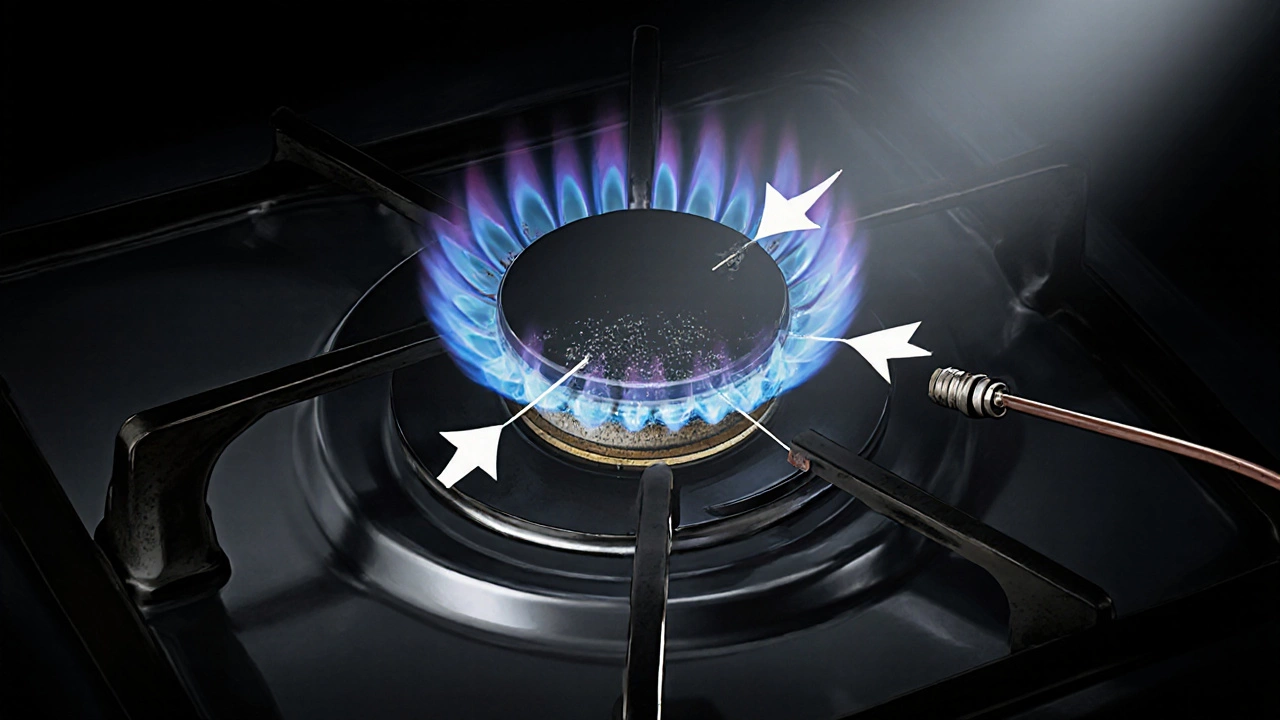
Igniter Problems in Gas Cookers
If you have a gas cooker and the burners won’t light, the igniter might be the issue. You should hear a clicking sound when you turn the knob. If you don’t hear anything, the igniter could be dirty, worn out, or disconnected. Clean it gently with a toothbrush and rubbing alcohol. If the clicking returns after cleaning but the gas still won’t ignite, the gas valve or safety sensor might be faulty.
Gas cookers have a flame failure device that shuts off the gas if it doesn’t detect a flame. If the sensor is dirty or misaligned, it thinks the flame isn’t lit - even when it is. Wipe it with a dry cloth. If that doesn’t help, the thermocouple (a small metal probe near the burner) might need replacing. It’s a $25 part and easy to swap.
Power Supply Board or Control Panel Glitch
Modern cookers rely on a control board - a small circuit board that manages everything: the oven, the hobs, the fan, the clock. If it gets wet, overheated, or fried by a power surge, it can die suddenly. Signs include unresponsive buttons, random error codes (like E1, F3, or Err), or the entire unit going dark even when power is confirmed.
Before replacing the board, check for water damage. Did you recently steam-clean the oven? Did a pot boil over and spill into the control panel? Moisture is the #1 killer of electronic control boards. If you see corrosion, rust, or white powder on the board, it’s likely damaged beyond repair. Replacing the board costs $150-$300 depending on the brand. For older models, it might not be worth it.
Door Switch Malfunction
Many ovens won’t heat if the door doesn’t close properly. There’s a small switch inside the door frame that detects when the door is shut. If the switch is broken, stuck, or misaligned, the oven thinks the door is open - and shuts off for safety. Test it by gently pressing the switch with your finger while the oven is turned on. If the oven starts heating when you press it, the switch is faulty.
Replace the switch. It’s a $15 part and takes 15 minutes. You’ll need to remove the door panel or the trim around the door frame. Don’t force it - use a screwdriver and take pictures as you disassemble so you know how to put it back.
When to Call a Professional
You can handle most of the fixes above with basic tools and a little patience. But if you’ve checked the power, reset the clock, tested the elements, cleaned the igniter, and replaced the door switch - and it still doesn’t work - it’s time to call a repair technician.
Call a pro if:
- The cooker trips the circuit breaker every time you turn it on
- You smell gas or burning plastic
- There’s visible damage to wiring or the control board
- The cooker is over 10 years old and repair costs exceed half the price of a new one
Don’t risk electrical shock or gas leaks. Even if you’re handy, some problems need certified technicians - especially with gas appliances. Always choose someone with Gas Safe (or local equivalent) certification if you have a gas cooker.
Preventing Future Breakdowns
Once your cooker’s fixed, avoid another sudden failure:
- Don’t spray cleaners directly on control panels - use a damp cloth instead
- Keep the oven cavity clean. Buildup can overheat elements and trigger safety cuts
- Use surge protectors if you live in an area with unstable power
- Check the door seal annually. A worn seal makes the oven work harder and strains the heating system
- Replace worn parts early. A cracked element or weak igniter won’t kill the cooker overnight - but it will get worse fast
Most cookers last 10-15 years. If yours is near that age and keeps breaking, consider upgrading. Newer models are more energy-efficient, have better safety features, and come with longer warranties.
Why did my cooker stop working all of a sudden?
A cooker can stop working suddenly due to a tripped circuit breaker, a faulty thermostat, a broken heating element, a glitched control board, or a failed door switch. Power issues and timer lockups are the most common causes - always check those first before assuming major damage.
Can I fix my cooker myself?
Yes, if you’re comfortable with basic tools and safety precautions. Replacing a door switch, cleaning an igniter, or resetting the clock are easy DIY fixes. But if you’re dealing with wiring, gas lines, or the control board, it’s safer to call a certified technician. Always turn off the power before working on any appliance.
How much does it cost to repair a cooker?
Simple repairs like replacing a door switch or thermostat cost $40-$80. Heating elements run $60-$120. Control boards are more expensive - $150-$300. Labor adds $60-$100 per hour. If the repair is over half the price of a new cooker, replacement is usually the smarter choice.
Should I replace my cooker if it’s 12 years old?
If it’s still working well after repairs and you don’t mind the energy use, you can keep it. But cookers over 10 years old tend to become less efficient and more prone to breakdowns. New models use 20-30% less energy and have better safety features. If you’re spending more than $200 on repairs, it’s time to consider replacing it.
Why does my gas cooker click but not light?
If the igniter clicks but the gas doesn’t light, the problem is usually a dirty or misaligned flame sensor, a clogged gas port, or a weak thermocouple. Clean the igniter and sensor with a toothbrush and alcohol. If that doesn’t help, the thermocouple likely needs replacing - it’s a common and inexpensive fix.
